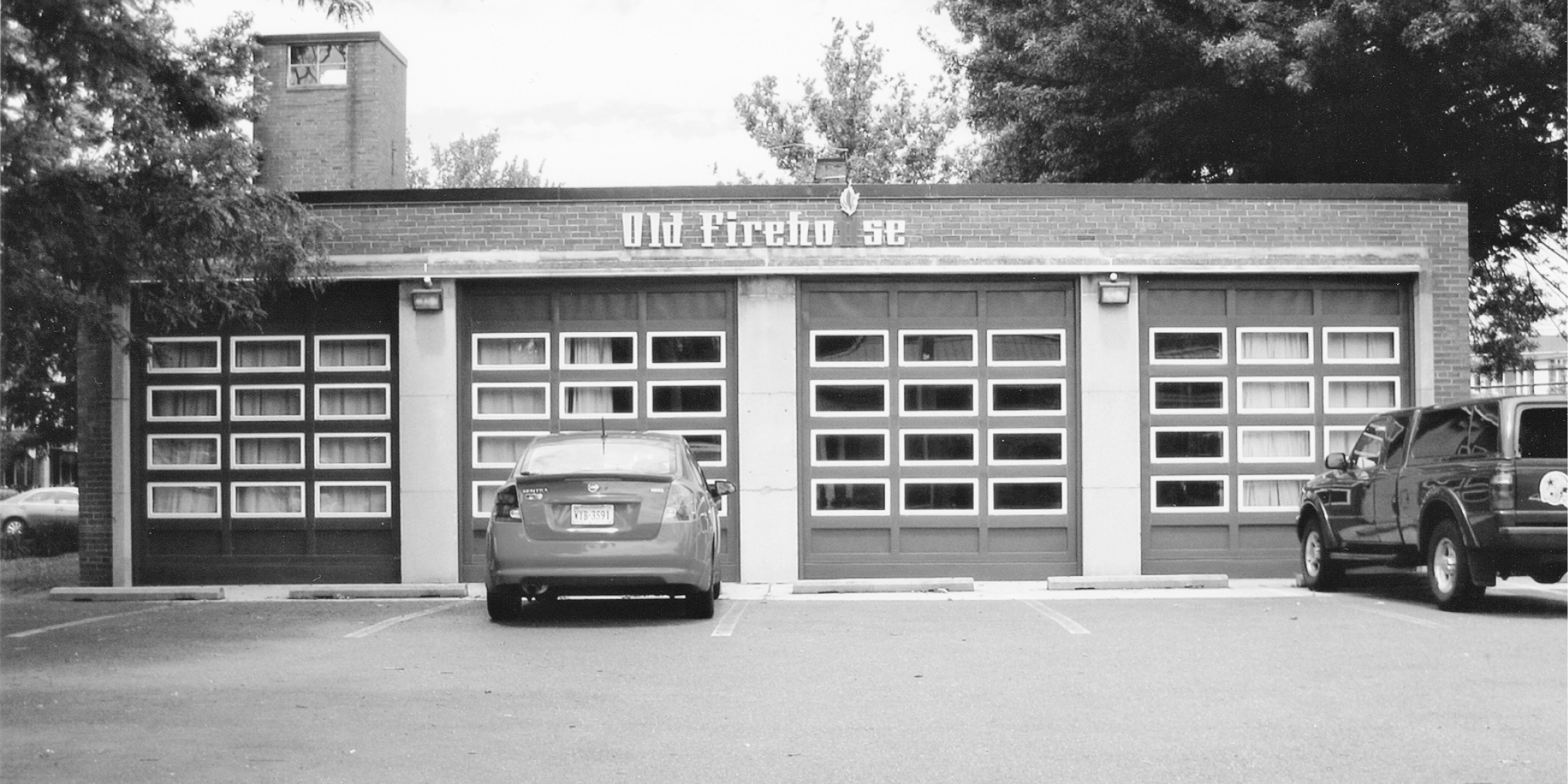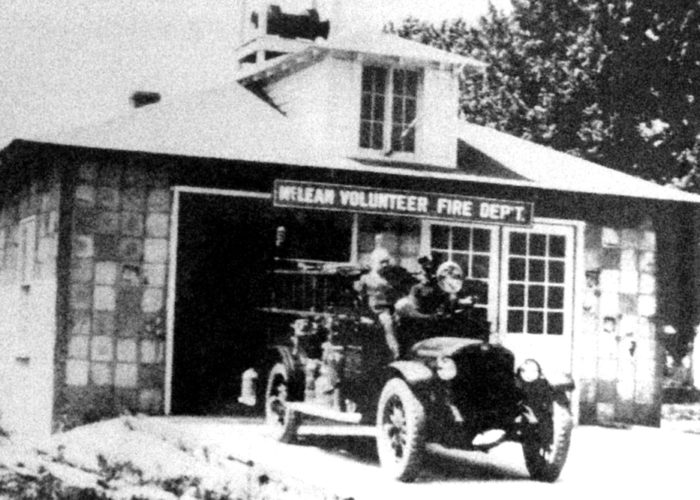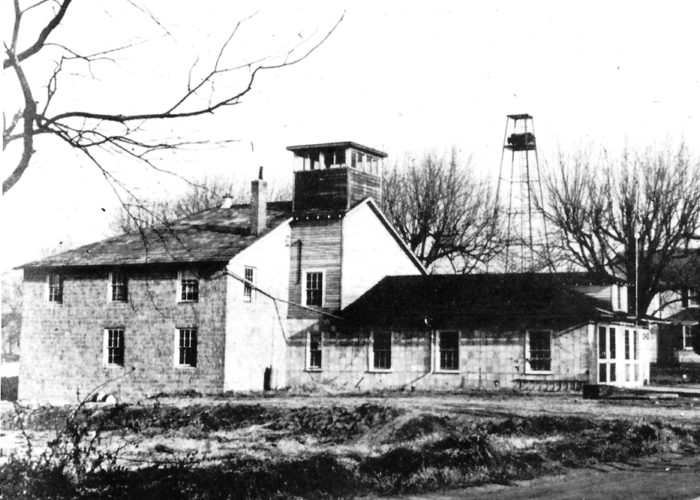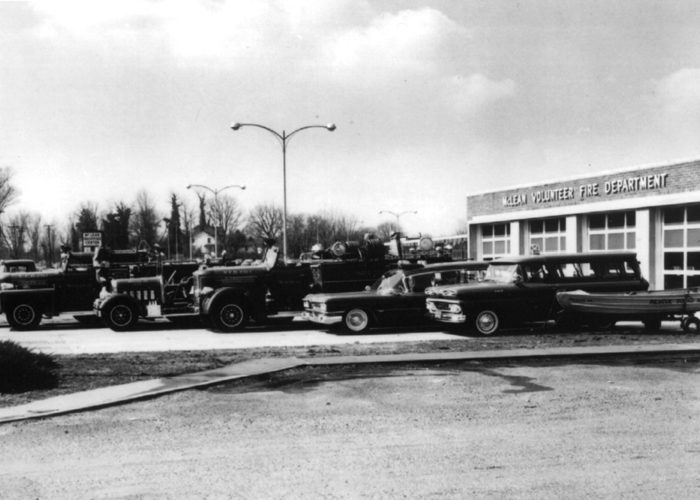McLean came about in 1910. There was no fanfare. It simply happened because the Great Falls & Old Dominion Railroad, an electrified trolley line that opened in 1906, crossed Chain Bridge Road. At first the stop was called Ingleside, but in 1910 the name changed to McLean, honoring one of the founders of the railroad, John R. McLean. This was a farming community; there was little around the stop. The center of activity was Storm’s General Store and Post Office, located on the northwest side of the tracks (today’s Old Dominion Drive) at Elm Street and Chain Bridge Road.
Fires were not a rarity. It was soon realized that the area’s fire protection was not sufficient and there was a need for an organized fire department to service the new village. At this time, McLean had to rely upon assistance from stations in Falls Church, Arlington, or the District of Columbia. Volunteer fire fighters began meeting in Storm’s Store about 1916. These early meetings resulted in the formation of the McLean Community Fire Association, which reorganized in 1922 and changed its name to the McLean Volunteer Fire Department. The MVFD incorporated in 1923. This was the first charter of its kind in Fairfax County and, so, the MVFD was designated “Company 1.”
On September 4, 1924, James and Maude Beatty conveyed 1/6 of an acre of their property along Chain Bridge Road at Cedar Street (today Redmond Drive) for a firehouse. The deed included a proviso that the property would always be used to support a volunteer fire department. A two-bay cinder-block station was completed in 1925 at a cost of $5000. There were 25 members of the MVFD at that time. All of the members, along with others in the community, donated their time and labor as needed in constructing the station. By this time a General Motors gasoline-powered one-ton truck had been purchased, along with four 20-gallon chemical tanks from the Buffalo Chemical Fire Extinguisher Company. Three of these tanks were installed on the truck. McLean was now able to provide some means of fire protection for its citizens: it had a firehouse, a fire truck, and four chemical tanks.
Women wanted to be a part of this new endeavor and support the men in their firefighting activities. They wasted no time, and in 1925 formed the Ladies Auxiliary in order to help with fundraising and provide refreshments for the firefighters during emergencies. The firehouse became a gathering place for residents. The volunteer firemen and Ladies Auxiliary brought spirit to the community. There were parades and picnics; holidays were celebrated. A cedar tree at Chain Bridge Road and Cedar Street served as a community Christmas tree. The firemen and Ladies Auxiliary, in keeping with the spirit of the season, decorated it every year.
The MVFD took over the operations of the McLean Day celebration in 1926 as a way to raise additional funds. The name of the event was changed to the McLean Carnival and it became a three-day affair rather than just one. It continued to be held at the Civic League Lot adjacent to the Franklin Sherman School. As the enrollment at the school increased, the firemen thought that it was essential for the students to have a fire escape in case of an emergency. A tubular escape was installed in 1927 on the outside of the southeast side of the building that led from a second story exit to the ground below. Of course, the escape was the focal point of the numerous fire drills over the years, but it was mainly used as a “theme park attraction” by area youth when school was not in session.
Since water is not always easily available when fighting fires in rural areas, an underground concrete cistern was constructed in front of the firehouse in 1928 from which a pumper could be kept fully filled. The cistern was built to hold 28,000 gallons of water at a cost of $400.00. That cistern remains today, under the parking lot, in front of the Old Firehouse. Two years later, in 1930, a 20 foot electric spindly-legged siren tower was mounted on the roof of the firehouse to alert and summon firefighters that the McLean station had received a call for emergency help. At this time, help was a time-consuming three-step process. First, an individual had to call the Falls Church exchange on Great Falls Street and report the trouble. The receiving operator would then dial the crisis number for McLean (424J1) which then rang at the firehouse, Storm’s Store, and Chief Beattie’s house. A volunteer would then activate the siren. When the dial telephone system became available in 1939, the Falls Church operator was able to automatically activate the siren after receiving a call for help. However, the siren kept sounding until someone turned it off.
The MVFD had to keep up with the village of McLean as it developed. More firefighting equipment and vehicles were purchased and needed to be stored. Thus, in 1932, just seven years after the cinder-block firehouse was built, a large two-story red-brick attachment was added to the rear of the original two-bay station. The cost of the addition was kept down because most of the materials were donated and the labor was provided by volunteers. When completed, vehicles and equipment were kept on the lower level, but the upper level was used for community activities such as meetings, dinners, and fundraising events. Thus, Station Number 1 turned into McLean’s community center.
In 1935, a custom built fire truck pumper was purchased from Peter Pirsch and Sons. The Pirsch pumper was able to carry 500 gallons of water. But the volunteer firemen were now doing more than simply putting out fires: they were also providing life-saving emergency service. All the firemen were given instructions in first aid. A Rescue Squad was established in 1935. The Ladies Auxiliary was the driving force in raising money to help purchase a 1931 Cadillac sedan, which was converted into Fairfax County’s first ambulance.
The MVFD continued to require more space and, so in 1939, the firemen talked with the Beatties requesting to purchase an additional small portion of their property. This was a narrow strip of land amounting to 540 square feet that lay adjacent to the firehouse on its west side. The Beatties were supportive and the sale was completed in September of 1940.
Because of McLean’s proximity to Washington, World War II brought an increase in activity at the station in the form of volunteer airplane spotters. The area was on “high alert” due to the 1941 Japanese attack at Pearl Harbor. In 1942 a four-sided cupola was added to the roof of the original two-bay station for volunteers to search for enemy aircraft that might fly overhead. These spotters consisted of men, women, and youth who resided in the McLean area. There were at least two persons in the observation tower at all times. They took shifts, were given binoculars, and kept a log book so that they could record every plane they observed.
The McLean area and MVFD continued to grow. In June of 1944, the MVFD acquired an additional 13,740 square feet of adjacent property from the Beatties in order to further expand the firehouse. At this time the Beatties granted the release of the 1924 encumbrance stating that the land could only be used for volunteer firefighting purposes. But it wasn’t until 1947 that the original two-bay cinder block structure was taken down and replaced with a one-story brick structure with four bays facing Chain Bridge Road. A meeting area, office space, and a kitchen were included in the new building and the 1932 addition remained. A hose tower was later added on the west side of the station.
Since the population was rapidly increasing throughout Fairfax County, the MVFD began to shift from an all-volunteer fire and rescue organization to an all-career department. McLean’s Sam Redmond was the first to be hired as a full-time career firefighter in the county. He was assigned to Company 1 and awarded badge number 1. In time, Cedar Street changed its name to Redmond Drive. Blacks and women became a part of the career department as the MVFD turned into a fully paid ‘round the clock staffed station supplemented by trained and dedicated volunteers. McLean was rapidly growing and by the early 1980s residents realized that the 1947 station was outdated and required a significant upgrade.
This led to discussions between the MVFD and Fairfax County concerning a plan for the county to build a new station. An arrangement was eventually reached where the MVFD turned over the existing firehouse to the county to help offset the expense of constructing a new station. Property was purchased nearby at the corner of Laughlin and Whittier Avenues where an 18,000 square foot, four-bay, drive through fire station was built and opened in 1988.
Now, under the ownership of Fairfax County, the older station on Chain Bridge Road was turned over to the McLean Community Center which transformed it into a teen center. McLean resident Al Pierce provided the architectural and interior design services pro bono through his company, Pierce Architecture, and obtained all of the volunteers needed for the required engineering work. The Teen Center’s grand opening took place October 13, 1990. Taking care to retain the firehouse theme, the teens renamed the building “The Old Firehouse.”
Pictured at top: Old Firehouse Teen Center 2013









